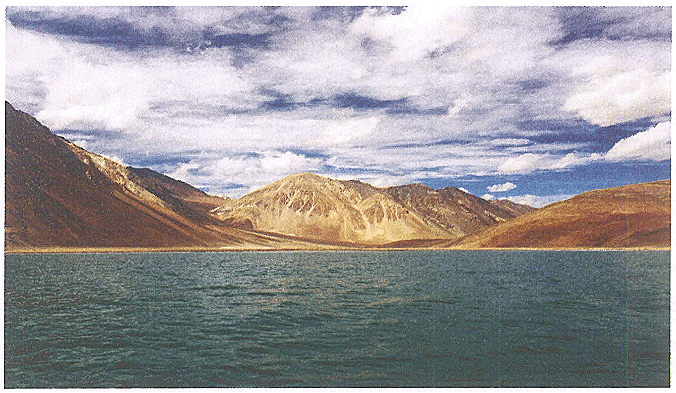The Small Ghost of the Mountains Chapter Notes | Gul Mohar Class 7: Book Solutions, Summaries & Worksheets PDF Download
| Table of contents |

|
| About the Author |

|
| Detailed Summary |

|
| Moral / Message |

|
| Character Sketches |

|
| Vocabulary Table |

|
About the Author
G. Shaheed is a journalist and writer who worked as the Chief of the Legal and Environment News Bureau of Mathrubhumi newspaper in Kochi. He writes on environmental issues and brings attention to rare species and the challenges of conservation.
Detailed Summary
The chapter introduces the Pallas’s cat, one of the smallest wildcats in the world, named after German naturalist Peter Simon Pallas. It lives at very high altitudes (up to 12,000 feet) in the rocky mountains of Mongolia. Because of its white-grey fur, it blends perfectly into its surroundings, making it almost impossible to spot. This camouflage helps it hide from predators and ambush prey.
In 2017, wildlife photographer Shefiq Basheer Ahammed from Kochi, Kerala, travelled to Mongolia to capture this rare cat on film. He first trekked in the Hustai National Park and then moved to the Altai Mountains for 11 days with local guides. The guides explained that although the cat is elusive, it can sometimes be tracked with camera traps, footprints in the snow, or even radio telemetry. However, great patience and endurance were required because the weather was harsh and unpredictable.
Ahammed faced freezing winds, sudden snowstorms, and extreme cold. The barren, snowy landscape seemed lifeless except for rodents. On his third day, he finally spotted the cat with the help of his guide. At first, he mistook it for a rock because it was camouflaged in snow. Slowly, he began to observe and photograph it. Over 15 days, he managed to see the cat six times, sometimes on horseback in steep terrain. He described it as a magnificent sight, with its face covered in snow and whiskers shining like icicles.
But the cat was also unpredictable—on one occasion it suddenly vanished, possibly slipping into hidden passageways between rocks and snow. The guide admitted that sometimes even scientists and photographers leave without a single sighting of this secretive animal.
The text also shares experiences of Paul Williams, a BBC wildlife filmmaker, who said it took his team many weeks to spot the cat while filming in Mongolia. They relied on the sharp eyes of local nomads. He admired the cat for looking almost mythical, deep in thought, and full of character. One highlight of the filming was discovering five playful kittens in a rocky cave.
In India, scientist Neeraj Maher of the Wildlife Institute of India has studied the Pallas’s cat in Ladakh’s Changthang region since 2013. Local farmers and shepherds often see it while grazing livestock.
Finally, the chapter highlights the conservation status of the Pallas’s cat. In 2016, the IUCN (International Union for Conservation of Nature) classified it as Near Threatened because of loss of prey, habitat destruction, and human activity. Conservation groups such as the Pallas’s Cat International Conservation Alliance are working with the IUCN to protect this rare and fascinating species.
Moral / Message
The chapter reminds us about the importance of protecting rare and elusive species like the Pallas’s cat. It highlights patience, perseverance, and respect for wildlife. Conservation is essential because animals like the Pallas’s cat are vital to biodiversity. The message is clear: humans must adopt responsible tourism, protect habitats, and support conservation efforts to ensure such unique animals survive.
Character Sketches
Shefiq Basheer Ahammed
A wildlife photographer from Kerala, he is adventurous, patient, and passionate about nature. His determination helped him spot and photograph the elusive Pallas’s cat despite extreme conditions.
The Guide
Local Mongolian guide who was skilled at tracking the cat. Patient and knowledgeable about the terrain and wildlife, he gave confidence to Ahammed but also warned him about the unpredictability of sightings.
Paul Williams
A British filmmaker who documented the Pallas’s cat for the BBC. He showed great perseverance, depending on the eyes of nomadic people to track the cat. He admired the cat’s beauty and uniqueness.
Neeraj Maher
An Indian scientist studying the Pallas’s cat in Ladakh since 2013. His work helps spread awareness about its habitat in India and the need for conservation.
Vocabulary Table

|
28 videos|56 docs|17 tests
|
FAQs on The Small Ghost of the Mountains Chapter Notes - Gul Mohar Class 7: Book Solutions, Summaries & Worksheets
| 1. What is the main theme of "The Small Ghost of the Mountains"? |  |
| 2. Who are the main characters in the story, and what are their traits? |  |
| 3. What moral lessons can be derived from "The Small Ghost of the Mountains"? |  |
| 4. How does the setting of the mountains contribute to the story? |  |
| 5. Can you explain the significance of the ghost in the narrative? |  |















